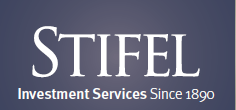
Conservative, Aggressive, or Somewhere In Between
How aggressive should you be when it comes to the
investments in your portfolio. Is a mix of conservative
investments su cient, or will your goals require you to
take on a greater degree of risk.
If you’re looking for answers to the questions posed
above, developing a better understanding of the
concepts of risk tolerance and asset allocation can
help you determine whether you should approach
investing in a conservative style, an aggressive style, or
somewhere in between.
Understanding Risk
There are many forms of risk as it applies to investing, but the most common de nition of risk is
the possibility of one’s investments losing value. In general, the greater the risk, the greater the price
fluctuation. When determining your tolerance for risk, you must consider your age, investment time
horizon, present and future nancial condition, and your long-term investment goals.
Asset allocation, which is the process of deciding what percentage of your money to put into three
major asset classes: stocks, bonds, and cash, is a popular way to reduce your exposure to risk. The three
classes can be further broken down into terms of market capitalization (small cap, mid cap, and large
cap), style (such as value or growth investing), and international or domestic securities.
Determining Your Asset Allocation Mix
Since studies have shown that asset allocation may account for over % of the variance in
performance of various investment portfolios, it is important to choose an allocation mix that is right for
you. At Stifel, we have two tools that can help you determine your tolerance for risk and better understand
how your assets can be allocated among various classes and investing styles. Your Financial Advisor
can provide you with a risk assessment questionnaire, the answers to which will determine which of the
following categories generally ts your investment pro le.
. Conservative:
A Conservative investor values protecting principal over seeking appreciation. This
investor is comfortable accepting lower returns for a higher degree of liquidity and/or stability.
Typically, a Conservative investor primarily seeks to minimize risk and loss of principal.
. Moderately Conservative:
A Moderately Conservative investor values principal preservation, but is
comfortable accepting a small degree of risk and volatility to seek some degree of appreciation. This
investor desires greater liquidity, is willing to accept lower returns, and is willing to accept minimal
losses.
. Moderate:
A Moderate investor values reducing risks and enhancing returns equally.
This investor
is willing to accept modest risks to seek higher long-term returns. A Moderate investor may endure a
short-term loss of principal and lower degree of liquidity in exchange for long-term appreciation.

I
February 2014
Investment Strategist
Investment Strategist
SNINS
